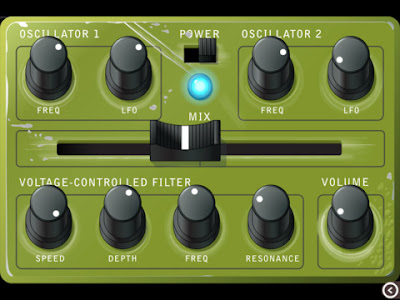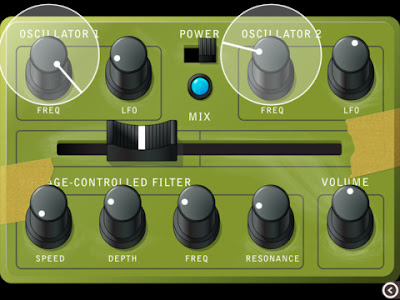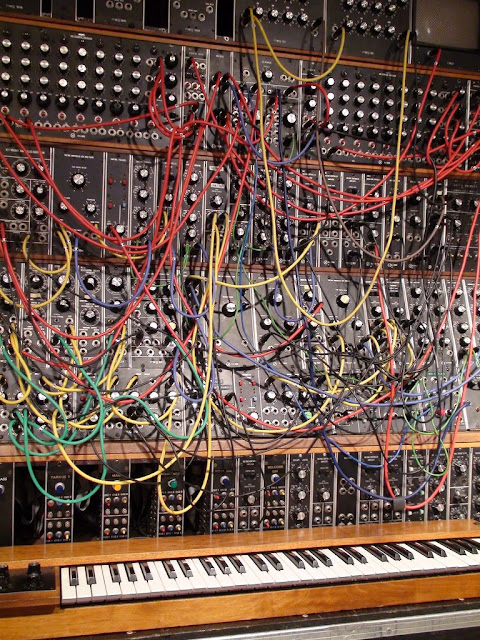Update: The new home for this list is now
here. You can add to the list there or comment here and I will update both lists. Note that the complete list however will be there as I do not plan on updating this list with updates made there. That would be too much work and would compete with me being able to put up new posts here. Can't let that happen. : ) Related but separate from that list also see
https://120years.net. That said...
If you are going to add to the list in the comments, use the same format.
Year - Manufacturer - Model - First at
1837 - C.G. Page (Salem. Mass) - first to produce electronically generated sound (not necessarily associated with a musical instrument). After inventing the Volta in 1800 (an early battery), in 1837 Page was doing experiments with coils and realized when certain coils were attached to a batter they omitted a ringing sound. While he initially thought the ring came from the electrical current was interrupted (battery disconnected), what was actually taking place was the induction through the coils was causing them to vibrate. via
Peter Grenader1885 - Person and Ernst Lorenz -'Elektrisches Musikinstrument' - the first musical instrument designed to produce electrically generated sound. It used electronic vibrations to drive an electromagnet that were connected to resonating boards, which translated these vibrations to sound. via
Peter Grenader1897 - Taddaeus Cahills - Telharmonium - electromechanical instrument.
1936 - Oskar Sala - Mixturtrautonium - first synth using Subharmonic synthesis
1939 - Homer Dudley invents the Parallel Bandpass Vocoder (VODER) - A manually key operated speech synthesizer
1940 - Homer Dudley invents the The Voder speech synthesizer - A device which used the human voice and an artificial voice to produce a composite
Both were researched as a way to transmit speech over copper wires (id est, telephone lines)
1948 - Hugh LeCaine - Electronic Sackbut - First voltage-controlled synthesizer
1948 - Dr. Raymond Scott - Wall of Sound - First polyphonic Sequencing Worstation (electromechanical) and the Electronum - first sequencer.
1950 - CSIR - Mk 1 - The first known use of a digital computer for the purpose playing music
1956 - Louie and Bebe Barron - Produced the first all-electronic musical score for a major motion picture - MGM's 'Forbidden Planet'
1957 - Max V. Mathews at Bell Labs - MUSIC - the first digital synthesizer. Technically, it was a computer program, though it set the stage for every digital synthesizer that proceeded it. See
Laurie Spiegel with one here.
1963/64 - Buchla - model 100 modular - 1st "modern" modular synth
1967 - Moog - Moog modular synthesizer I, II & III - 1st commercial modular synth.
1969 - EMS - Synthi VCS-3 - first non-modular mini-synth
1970 - MOOG - Minimoog - 1st Mono Synth with keys (non-modular)
1971 - Tonus/Arp - Soloist - 1st preset mono synth
1971 - John Chowning - developed FM synthesis using the MUSIC-IV language (source), a direct descendent of Mathew's MUSIC program. FM synthesis was later licensed by Yamaha, and used in popular synths such as the DX-7.
1972 - Triadex Muse - first digital synth
""is the first digital musical instrument and was produced in 1972. It was
designed by Edward Fredkin and Marvin Minsky at MIT. It is an algorithmic
music generator: it uses digital logic circuits to produce a sequence of
notes based on the settings of various parameters. It has four small sliders
in that control Volume, Tempo, Pitch, and Fine Pitch. It is not known how
many were made, but they are considered extremely rare.
The Muse is the subject of U. S. Patent 3610801"
1973 - Coupland Digital Music Synthesizer - First Digital (Triadex beat it?)
Update via Peter Grenader: "No time to read through all these posts to see if it's come up yet, but the Coupland was vaporwear...it never existed. I met Mark Vail, who's now a friend, by writing him a letter informing him that his story about the Coupland in his Vintage Synthesizers book (GREAT book) which mentioned it's only recorded showing was at the AES show in LA in 1978 was a farce. I was there - at their booth and their suite in the Hilton where the instrument was said to be. I was there on the first day, I was there on the last day. The only thing they had was a small model - about six inches across, sitting on a table. The booth was amazing - this radial orb multiple people could sit in, with a cover that came over each person which played what I remembered was a very impressive demo which swirled around four speakers inside the box. I, and everyone else, were blown away. They kept saying...'it will be here tomorrow, it'll be here tomorrow'...so I showed up the last day just to see it, figuring by the then it would have arrived...it didn't. I did see the frst Synthclavier at that show however. Their suite was across the hall from the Coupland folk. That completely kicked the crap out of everything else shown that year."
1973 -
Dartmouth Digital Synthesizer - NED - Synclavier prototype - first digital synth
1974 - Roland - SH-3A - first commercial additive synth
1974 - RMI - Harmonic Synthesizer - first commercial additive synth
1975 - Buchla 502 - six voice polyphonic with minicomputer and ability to save patches to tape drive. Development on the 500 series began in 1969.
1975 - Oberheim FVS - four voice polyphonic with Polyphonic Synthesizer Programmer. Not sure if the Buchla 502 or FVS was released first.
1976 - PPG -
PPG 1003 sonic carrier - 1st programmable mono/duo synth with patch memory (this, along with the model 1020, might have been the 1st synths to use DCO's as well)
1977 - Yamaha - CS50/CS60/CS80 - first single enclosure polyphonic keyboard synthesizers with the CS80 to be the first synth with poly aftertouch
1977 (late) - Oberheim - OB-1 - 1st commercial programmable mono synth with patch memory
1978 (late) - PPG - Wavecomputer 360 - 1st wavetable synth
1978 - Sequential Circuits - microprocessor control the SCI prophet 10 (briefly) and the P-5 --- again based on existing E-mu tech stuff
1979 - NED - Synclavier - First FM
1979 - Fairlight CMI - First Sampler, First Workstation
1980 - Performance Music Systems - Syntar - First self contained keytar
1982 - Sequential Circuits - Prophet 600 / First Midi Synthesizer (though some argue the Prophet 5 rev 3.2 is pre-MIDI MIDI)
1983 - Yamaha - DX7 - Digital takes over, FM goes mainstream
1983 - OSC - OSCar - First real-time additive with analog filters
1984 - Sequential Circuits - SixTrak - first multitimbral
1985 - Casio - CZ-101 - First battery-powered all digital mini-synth
1987 - Kawai K5 and Technos Axcel - first additive synths
1989 - E-Mu Systems - Proteus - First dedicated ROMpler
1992 - Seer Systems - first host-based software synthesizer in 1992
1994 - Yamaha - VL1 - first physical modelling synth
1995 - Clavia - Nord Lead - 1st Virtual Analog
1996 - Rubberduck - still not the first softsynth but came before Seer Systems Reality.
1996 - Steinberg - VST - Ok not a synth but enabled a lot to be written as plug-ins and used simultaneously
1997 - Seer Systems - Reality - First Modular Soft Synth
2002 - Hartmann Neuron - first neuronal synth
2912 - KalQuestoTron - the first genetically engineered synth. Each cell is an oscillator, filter, and neural sequencer. Can be delivered via injection to always play 'hold music' in your head.
I thought it might be fun to have a "first synth to..." post. There's been a lot of buzz over
Sonic State's Top 20 Synths of All Time with good reason. What exactly is a "top synth?" Is it it's influence on the music scene? It's rarity and lust appeal? The number of synths sold? According to Sonic State their list was the result of Sonic State reader's voting for their favorite synths. Blame the voters if you don't like what you see. Based on what has come up on the list so far, the E-Mu Proteus and Roland JV-1080 for example as well as the Roland Jupiter 8 not even making the top ten, I'm guessing a bit of it has to do with the vote and... possibly the most influential/ground breaking synths for their time. The JV1080 and Proteus? Not super sexy in this day and age, but what they offered in their time? Who knows. It's obviously subjective. But there is something that isn't. The most influential synths of all time not because they were super sexy or utilitarian, but because they offered something that was not previously available.
I thought what might be interesting to create a list of the first synths to feature a particular technology or feature. For example what was the fist synth to bring FM to the table? Was it the DX7 or a predecessor? What was the first digital synth and when? The first additive synth? I have a good idea and could probably look it all up, but that wouldn't be any fun, so.... You tell me. I am going to make this an open post that will live over time. You get to participate by putting an entry in the comments. I will update the list and when I do I will change the time stamp of the post to keep it current. That said, for the archives, this post went up with a time stamp of 4/11/07 7:20 PM PST. I'll start the list (btw, do correct me on the MOOG, what model should we be talking about here? The A, B, C or D or all of them?).
Year - Manufacturer - Model - First at
1970 - MOOG - Minimoog - 1st Mono Synth with keys (non-modular)
1978 - Sequential Circuits - Prophet 5 - 1st Programmable Polyphonic Analog
... List continues above.
Update 3/34/12: Also see
the first synthesizers to offer patch storage here.
































































